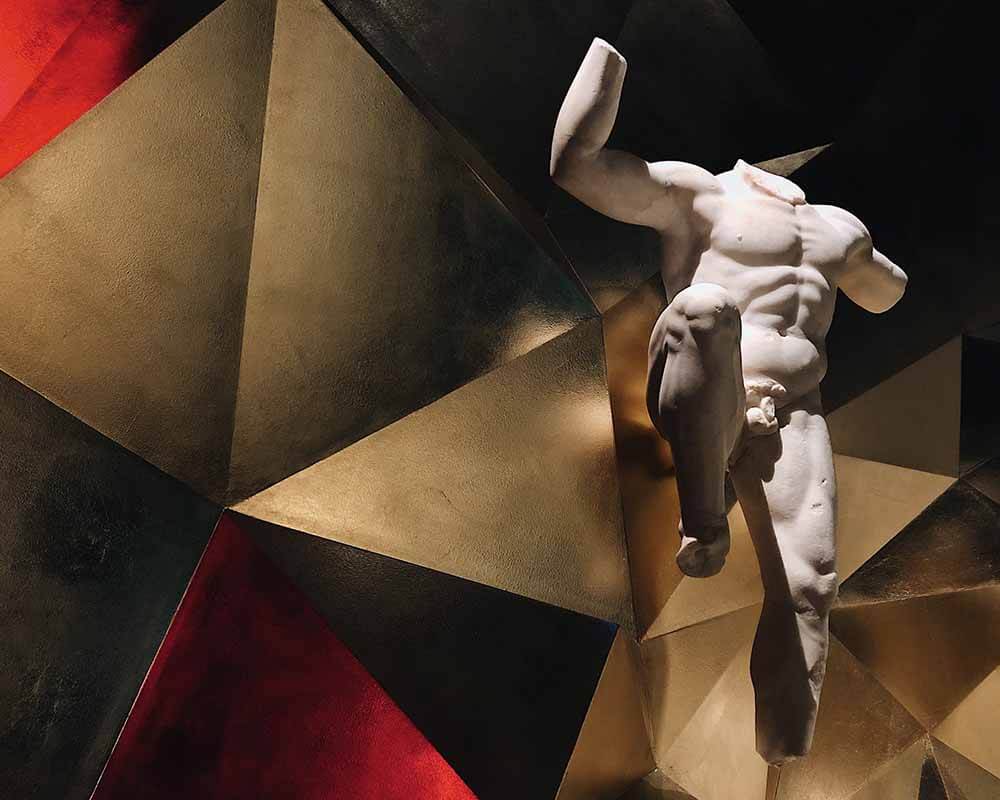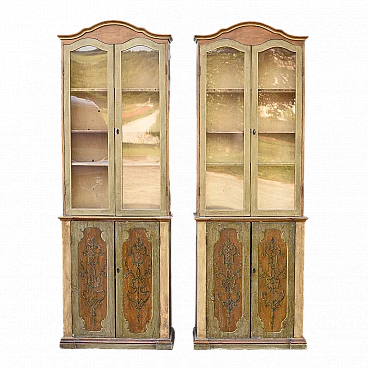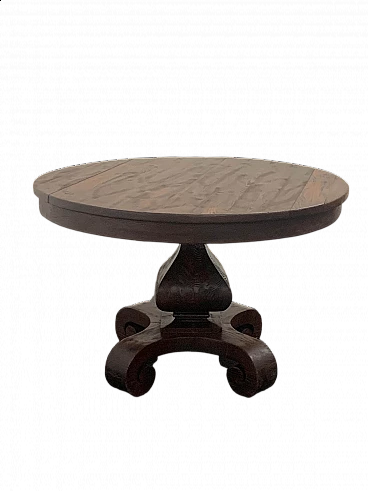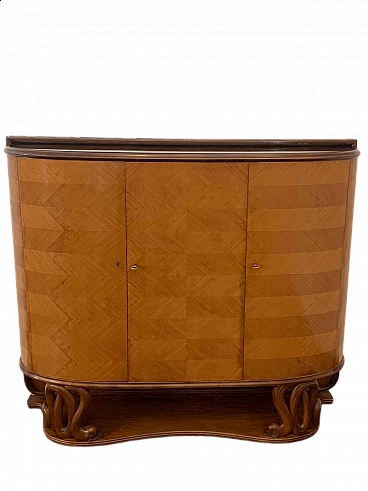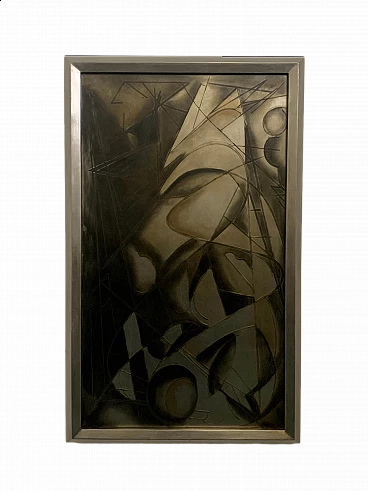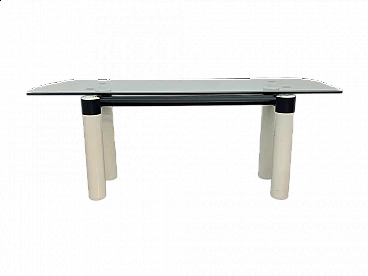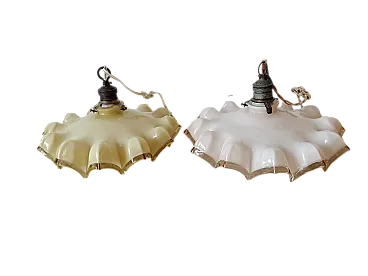Sideboard sculpture by Dante Morozzi (Florence 1899 - Geneva 1965), in olive wood and olive root.
The features fully reflect the style in vogue in the fascist period and enclose in the soft and monumental lines, probably the result of his collaboration with "the Arch. Marcello Piacentini". On the sides of the niches, the female sculptures, carved in the round, are presented in an elegant and compatible with the furniture, the briar is positioned to mirror the handle and the 4 pendants are in gilded bronze.
In a similar belief present in the salon of origin of the furniture but not available for purchase is the signature (see photo).
The cabinet has the concept of functional sculpture, the thickness of the sides, doors and floor are 3cm, carries as a weight on 100kg despite the small size.
The Florentine sculptor Dante Morozzi, born in the province of Florence in 1899, attended courses in sculpture at the School of Santa Croce in Florence, a pupil of Augusto Passaglia, then perfecting Much known in Cortina d'Ampezzo also for having directed the Institute of Art since 1933, was mainly a sculptor, ceramist and painter. In 1933 he took part in the Milan Triennale organizing the exhibition of the company Cantagalli and from 1933 to 1941 he became director of the State School of Art in Cortina d'Ampezzo. From 1935 to 1940 he exhibited at the most important art exhibitions in Italy, from the Venice Biennale, the Quadriennale in Rome and again at the Triennale in Milan. In 1941 he exhibited at the Galleria Il Tevere in Rome, where he presented a rich selection of sculptures and paintings, and participated in the Cremona Prize. An intelligent organizer, he was commissioned to set up the South Tyrolean exhibition at the VII Triennale in Milan, also presenting three of his works in sculpted wood representing the Madonna with Child, Christ and Horse, which unequivocally show his adherence to the monumental and heroic ways of the period. Also at the Triennale of 1940, the Art School of Cortina d'Ampezzo presented wooden inlays designed by Morozzi, praised by Giò Ponti for their "fluidity of tone and refinement of coloured chiaroscuro" (Giò Ponti in "Domus", June 1940). In 1943 he took part in the Quadrennial in Rome. A man with a strong character, for his belonging to the fascist party and for his activity as a delator, he was repeatedly challenged by the Ampezzans.
In 1941 he sold some of his anti-fascist colleagues to the regime, obtaining a professorship at the Brera high school in Milan.
At the end of the war he escaped from Italy, whose courts sentenced him to 18 years' imprisonment for collaborating with the Germans, and took refuge in Geneva, where he lost track of his life and activities, including his previous activities, which had been obscured by the past in the service of the fascist regime. He died in Geneva in 1965.


-large.webp)
-large.webp)
-large.webp)
-large.webp)
-large.webp)
-large.webp)
-large.webp)
-large.webp)
-large.webp)
-large.webp)
-large.webp)
-large.webp)
-large.webp)
-large.webp)

 SILVER Seller in Pesaro-Urbino, Italy
SILVER Seller in Pesaro-Urbino, Italy






.png)


